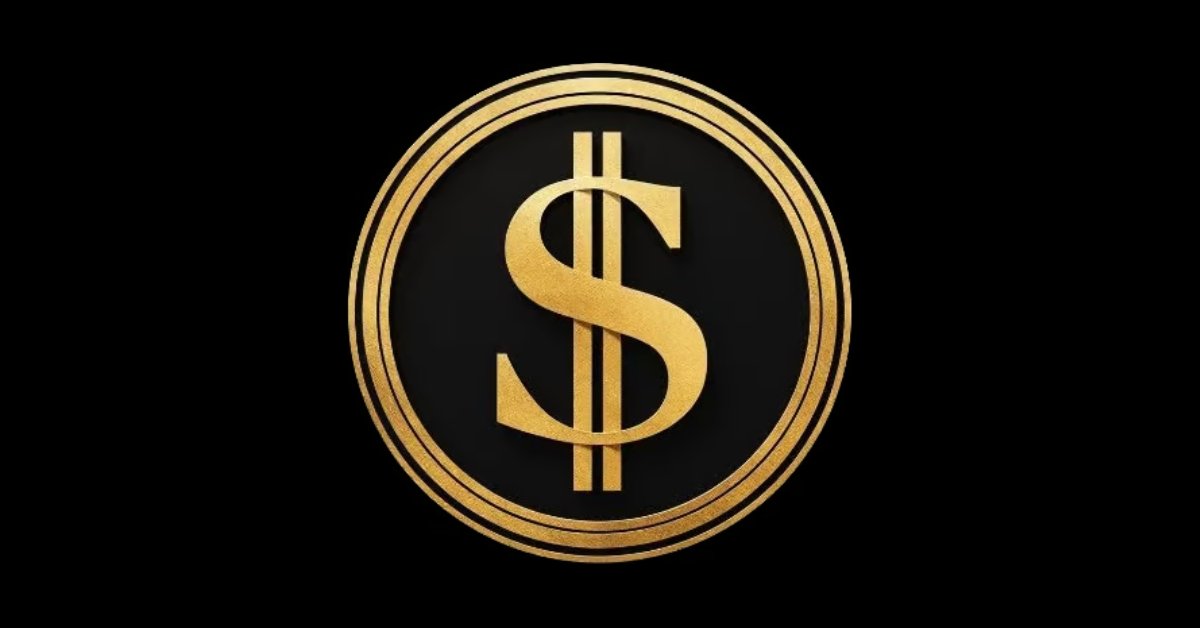Dive into the latest on USA DOGE! Explore its $180B savings, leadership shifts, and controversies in this engaging blog by THOUSIF Inc. – USA.
Table Of Contents
Introduction: Why DOGE Is Making Headlines
Hey there, curious reader!
If you have been scrolling through news feeds or X lately, you have probably stumbled across the term “USA DOGE.”
No, it is not a new cryptocurrency or a meme coin revival; it is the Department of Government Efficiency, a bold initiative that is shaking up the U.S. federal government.
Launched by the second Trump administration, DOGE promises to slash wasteful spending and streamline operations.
However, what is the real scoop?
Is it living up to the hype, or is it just political noise?
At THOUSIF Inc. – USA, we are diving deep into DOGE’s story.
It is jaw-dropping $180 billion in reported savings, the drama of Elon Musk’s exit, and the controversies that have everyone talking.
Buckle up for a human-crafted, no-BS breakdown of what DOGE is, what it has done, and where it is headed.
Let us get started!
What Is The Department Of Government Efficiency (DOGE)?
Picture this: a government department tasked with cutting the fat from federal spending while making things run smoother.
That is DOGE in a nutshell. Kicked off on January 20, 2025, via an executive order from President Donald Trump, DOGE reorganized the United States Digital Service (USDS) to focus on transparency, accountability, and, most importantly, saving taxpayers’ money.
DOGE’s mission is simple but ambitious: modernize outdated federal tech, eliminate fraud, and reduce waste.
Think of it like a financial Marie Kondo for the government, sparking joy by decluttering budgets.
The department’s official website boasts efforts to upload financial receipts for public scrutiny, and its X account actively crowdsources ideas from citizens to pinpoint inefficiencies.
However, it is not all smooth sailing.
DOGE has stirred up debates, with some praising its cost-cutting zeal and others questioning its methods.
Let us break down the key players and what has happened so far.
The Big Names Behind DOGE
DOGE’s story is packed with high-profile figures, and the leadership changes have been nothing short of dramatic.
Here’s who’s been steering the ship:
Elon Musk’s Brief but Bold Stint
When DOGE launched, Elon Musk was tapped as a “special government employee” to co-lead the charge.
Known for his disruptive approach at Tesla and SpaceX, Musk brought his signature flair, promising to slash $1 trillion from federal spending by October 2025.
His vision?
A leaner government with no room for “fraud and abuse.”
But by late May 2025, after just four months, Musk was out.
The split was messy, think deleted X posts, cryptic endorsements, and a public fallout with Trump.
Musk’s 130-day annual limit as a special employee didn’t help, but insiders say disagreements over strategy were the real culprit.
Despite his exit, Musk’s early work laid the groundwork for DOGE’s reported $180 billion in savings.
Russ Vought Takes The Helm
With Musk gone, Russ Vought, Trump’s former Office of Management and Budget director, stepped up.
Vought’s no stranger to budget battles, and he’s kept DOGE’s engines running, focusing on cutting “waste, fraud, and abuse.”
While he hasn’t officially claimed the top title, Vought’s leadership has been pivotal in pushing through recent savings and legislative wins.
Other Key Players
- Steve Davis and Katie Miller: Both left alongside Musk, leaving gaps in DOGE’s early leadership.
- Sahil Lavingia: A former DOGE engineer who sparked controversy by defending government efficiency, challenging Musk’s claims of widespread waste.
This revolving door of leaders has kept DOGE in the spotlight, but it’s the department’s actions that are driving the real conversation.
DOGE’s Financial Wins: $180 Billion And Counting
Let us talk numbers because DOGE’s savings are nothing to sneeze at.
As of June 14, 2025, the department claims $180 billion in total savings, though it’s short of Musk’s lofty $1 trillion goal.
Here’s a closer look at how they’re making it happen:
Key Savings Breakdown
DOGE’s been laser-focused on small but impactful cuts, from unused software licenses to outdated contracts.
Check out this table for a snapshot of their recent wins:
| Agency | Action | Savings (Annual, $M) | Reported |
|---|---|---|---|
| USDA | Removed unused software licenses (6,323 PowerApps) | 14 | June 13, 2025 |
| NASA | Terminated wasteful DEI climate contract | 0.911 | June 13, 2025 |
| IRS | Canceled 11,000 unused Power Apps | 12.3 | June 12, 2025 |
| SEC | Removed unused Office 365 licenses | 3.4 | June 12, 2025 |
| USGSA | Eliminated unused phone plans | 0.8 | June 9, 2025 |
| Overall | Reduced non-defense obligations by 22.4% | 25,000 | June 11, 2025 |
Notable Achievements
- Contract Terminations: On June 13, 2025, DOGE axed 90 wasteful contracts, saving $200 million. One standout? A $911,000 NASA contract tied to diversity, equity, and inclusion (DEI) initiatives, which DOGE deemed unnecessary.
- Tech Modernization: The National Weather Service’s Weather Radio was costing $17 million a year due to 1960s-era copper lines. DOGE’s push to upgrade these systems is saving millions.
- Big-Picture Impact: By June 8, 2025, non-defense federal obligations had dropped 22.4% year over year, translating to a $25 billion reduction compared to 2024.
These numbers are impressive, but they’ve come with some pushback. Let’s dive into the legislative side of things.
Legislative Milestones: The $9.4 Billion Rescissions Package
On June 12, 2025, DOGE scored a major win when the House passed a $9.4 billion rescissions package by a razor-thin 214-212 vote.
This package, championed by Trump and House Speaker Mike Johnson, codifies DOGE’s cuts, targeting:
- $8.3 billion in foreign aid, which critics argue is vital for global alliances.
- $1.1 billion for the Corporation for Public Broadcasting, sparking debates over the future of NPR and PBS.
This move wasn’t without drama.
Democrats slammed the cuts as harmful to essential services, while Republicans hailed them as a step toward fiscal responsibility.
The tight vote shows just how divisive DOGE’s agenda is, but it also clearly signals that the department’s influence is growing.
Here’s a quick table summarizing the rescissions package:
| Target | Amount Cut ($B) | Key |
|---|---|---|
| Foreign Aid | 8.3 | Harms U.S. global influence |
| Corporation for Public Broadcasting | 1.1 | Threatens NPR, PBS, and public media access |
Controversies And Challenges
No big initiative comes without hiccups, and DOGE has had its share.
Here is where things get messy:
The Musk-Trump Fallout
Musk’s exit wasn’t just a personnel change; it was a spectacle.
Deleted X posts, vague accusations, and a public spat with Trump fueled speculation.
Some say Musk’s ambitious $1 trillion target clashed with Trump’s more pragmatic goals, while others point to personality clashes.
Either way, it left DOGE navigating a PR storm.
Legal Setbacks
In May 2025, a federal court ruled some of DOGE’s cuts unlawful, forcing agencies like the NSF, IRS, FDA, and USAID to rehire workers who were fired or took buyouts.
This was a blow to DOGE’s momentum, raising questions about the legality of its aggressive cost-cutting.
Public And Insider Pushback
Not everyone’s on board with DOGE’s mission.
Sahil Lavingia, a former DOGE engineer, made waves by arguing that the government is not as wasteful as Musk claimed.
His comments sparked a broader debate: Is DOGE fixing real problems, or is it cutting too deep?
Critics also worry about the impact on public services, especially with the $9.4 billion rescissions package.
Here is a table comparing the two sides of the debate:
| Perspective | Argument | Supporters |
|---|---|---|
| Pro-DOGE | Eliminates waste, saves billions, modernizes systems | Trump, Vought, House Republicans |
| Anti-DOGE | Cuts harm essential services, and lack legal oversight | Democrats, Lavingia, public media |
What’s Next For DOGE?
So, where does DOGE go from here?
President Trump insists the department’s work is “not finished at all,” with plans to keep it running through summer 2026.
Russ Vought’s leadership is expected to maintain the focus on granular savings, such as more canceled contracts and tech upgrades.
But challenges loom:
- Legal Battles: Ongoing court cases could limit DOGE’s ability to make sweeping cuts.
- Public Perception: With critics like Lavingia and media outlets raising concerns, DOGE needs to win over skeptics.
- Legislative Hurdles: The Senate’s stance on the rescissions package remains uncertain, and bipartisan support is shaky.
DOGE’s X account continues to engage the public, asking for ideas to cut waste.
This crowdsourcing approach could keep the department grounded, but it will need to balance transparency with tangible results to maintain momentum.
Conclusion
Wow, what a ride!
From $180 billion in savings to Musk’s dramatic exit and a controversial $9.4 billion cuts package, the Department of Government Efficiency is reshaping how the U.S. government operates.
It has got its fans, its critics, and a whole lot of attention, and we are here for it.
Trivia Time: Did You Know?
Here’s a fun fact to lighten the mood: The name “DOGE” might remind you of the famous Dogecoin meme, but it’s actually a nod to efficiency, not cryptocurrency. However, Elon Musk’s involvement fueled speculation that he picked the name as a cheeky reference to his favorite digital coin. No confirmation, but it’s a quirky coincidence that’s got X buzzing!






